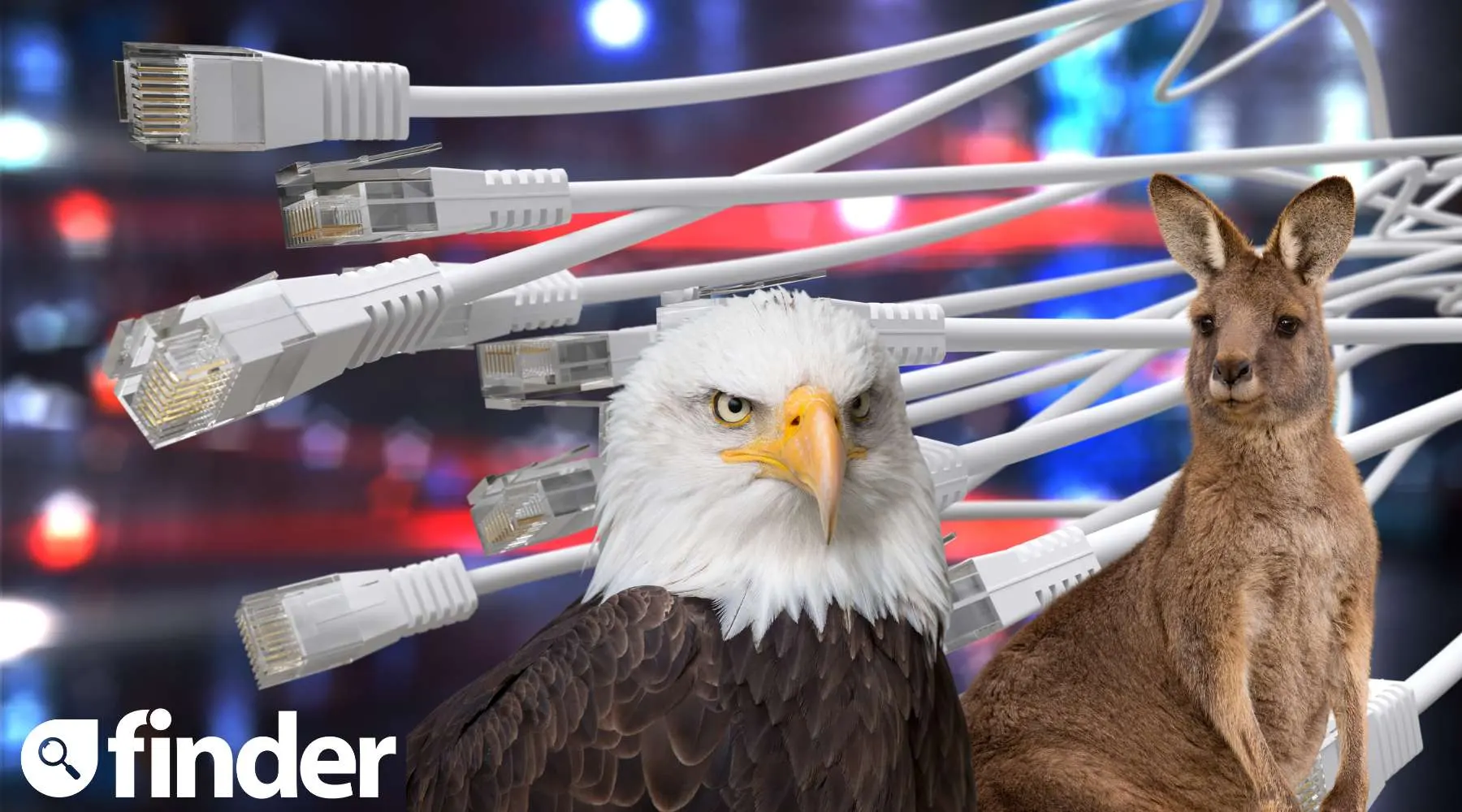Internet wars: Does the US have better broadband than Australia?

As the US deploys US$42 billion in upgrades, how are we doing down under?
Right now, state governments across the USA are working out how to dole out US$42 billion in federal funding to upgrade communities with sub-par internet services, as part of the Broadband, Equity, Access and Deployment (BEAD) scheme.
As a broadband nerd, I'm interested in this question: what counts as needing an upgrade, and how different is that from Australia?
Yes, I get it: The history, geography, network structures and politics are hugely different in the two countries. But the thirst for speed is more universal.
Under the US rules, an area is considered:
- "Unserved" if it has download speeds of under 25Mbps, and upload speeds of under 3Mbps;
- "Underserved" if downloads speeds are below 100Mbps download and uploads are below 20Mbps.
How does Australia compare to that approach?
I'd rank it as "OK, but could still be improved".
64% of existing connections would rank as "underserved" using that US metric.
NBN's Home Basic option, its cheapest wholesale option, would count as "unserved" in the US, since it offers a maximum possible speed of 15Mbps.
However, only a tiny proportion of users are on those plans.
ACCC market figures show that 8% of wired connections are on a Home Basic-level plan, which counts as "unserved" if you're stateside.
Connection speeds for wired connections, June 2023
| Speed | Number | % | US status |
|---|---|---|---|
>100Mbps | 224,418 | 3% | OK |
100Mbps | 2,081,222 | 25% | OK |
50Mbps | 3,873,140 | 46% | Underserved |
25Mbps | 1,579,886 | 19% | Underserved |
12Mbps | 710,352 | 8% | Unserved |
The big exception is users on satellite and fixed wireless, where speeds can often be below the "unserved" threshold. But even there, new Sky Muster Plus satellite plans rolled out this year promise burst speeds of up to 100Mbps. That's still "underserved" in US terms, but at least it's not "unserved".
In rural areas, some customers resort to paying more for Starlink rather than sticking with the NBN. Others rely on mobile broadband, though the impending 3G switch-off has raised concerns about reliability.
The other niggle, as always, is that many individual locations don't get the expected level of service. Fully 10% of Australians are not satisfied with their current broadband speed, according to Finder research. An even higher 28% say buffering is a regular issue when watching video online.
The NBN's full fibre upgrade scheme, which began rolling out to consumers in July, will eventually see more than 90% of homes and businesses on the fixed line network able to access speeds of up to 500Mbps, according to NBN Co's own projections.
At that point, very few wired locations would count as "underserved" by the US metric.
While many locations will have to wait until the end of 2025 for that fibre to become available, that's still likely faster than the US.
Each state is required to submit its detailed BEAD plans by the end of the year, but building the improved networks will take much longer.
"It's expected to take years for the states to award contracts to internet service providers to install the broadband networks and for the companies to complete the work," Professor Brian Whitacre from Oklahoma State University wrote in a recent BEAD deployment analysis.
Seems no matter where you go, achieving high internet speeds is not speedy.
Want to save on your internet plan? Compare broadband providers and find a better deal.
Ask a question
